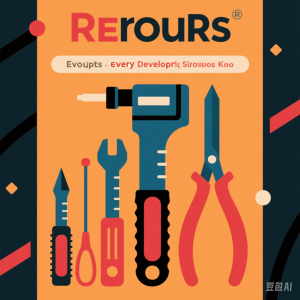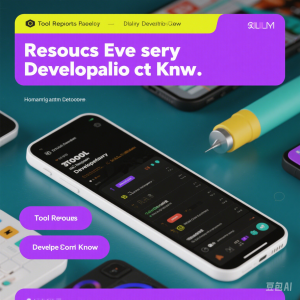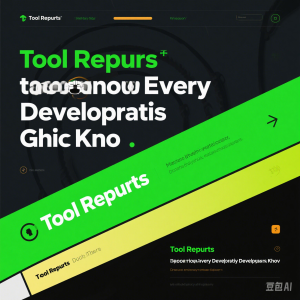Innovative Tool Resources for Modern Developers

In the ever – evolving landscape of software development, staying ahead requires leveraging the latest and most innovative tool resources. This article highlights some of the top – notch tool resources that can revolutionize a developer’s workflow and productivity.
Low – Code/No – Code Platforms: Democratizing Development
- OutSystems
OutSystems is a leading low – code platform that enables developers to build enterprise – grade applications rapidly. With its visual development environment, developers can drag – and – drop components, define business logic, and connect to various data sources without writing extensive code. For example, creating a customer relationship management (CRM) application with OutSystems can be done in a fraction of the time compared to traditional coding. It also offers seamless integration with existing systems, making it an ideal choice for organizations looking to digitize their processes quickly.
- Mendix
Mendix is another popular low – code platform that focuses on delivering high – quality applications. It provides a wide range of pre – built templates and components for different industries, such as finance, healthcare, and manufacturing. Developers can customize these templates according to their project requirements. Mendix also has a strong community where developers can share knowledge, collaborate on projects, and find solutions to common development problems. This platform is suitable for both small – scale startups and large – enterprise digital transformation initiatives.
AI – Powered Code Assistants: Boosting Productivity
- GitHub Copilot
GitHub Copilot, developed by GitHub in collaboration with OpenAI, is an AI – powered code – writing assistant. It can generate code snippets in real – time as developers type. For instance, when a developer is writing a Python function to perform data analysis, GitHub Copilot can suggest the appropriate code based on the function’s description. It supports multiple programming languages, including Python, JavaScript, and Java. By using GitHub Copilot, developers can save time on writing boilerplate code and focus more on the creative and problem – solving aspects of development.
- Tabnine
Tabnine is an AI – based code completion tool. It analyzes the context of the code being written and provides intelligent code suggestions. Tabnine can understand the developer’s intent and offer relevant code snippets, variable names, and function calls. For example, if a developer is working on a JavaScript project and starts typing “fetch”, Tabnine can suggest the correct syntax for making API calls using the fetch API. It can be integrated with popular IDEs like Visual Studio Code, IntelliJ IDEA, and Eclipse, enhancing the coding experience across different development environments.
Containerization Tools for Efficient Deployment
- Docker
Docker has become the de – facto standard for containerization. It allows developers to package applications and their dependencies into a single, portable unit called a container. These containers can run consistently across different environments, from development to production. For example, a developer can create a Docker container for a Node.js application, including all the necessary Node.js runtime, libraries, and configuration files. This container can then be easily deployed to a server or a cloud – based platform without worrying about environment – specific issues. Docker also simplifies the process of scaling applications, as multiple containers can be run in parallel.
- Kubernetes
Kubernetes is a container orchestration platform that complements Docker. It automates the deployment, scaling, and management of containerized applications. With Kubernetes, developers can define how many instances of a container should be running, and it will ensure that the desired state is maintained. For example, in a microservices – based application, Kubernetes can manage the deployment and scaling of each microservice container. It also provides features for load balancing, self – healing (automatically restarting failed containers), and rolling updates (updating containers without causing downtime).
Automated Testing and Continuous Integration/Deployment (CI/CD) Tools
- Jenkins
Jenkins is an open – source CI/CD tool that has been widely adopted in the software development industry. It allows developers to automate the build, test, and deployment processes. For example, whenever a developer commits code to a version control system like Git, Jenkins can be configured to automatically build the project, run unit tests, and if all tests pass, deploy the application to a staging or production environment. Jenkins has a vast library of plugins that enable integration with various tools, such as testing frameworks, code quality analyzers, and cloud platforms.
- CircleCI
CircleCI is another popular CI/CD platform that offers a seamless integration with major version control systems. It provides a user – friendly interface for defining build and deployment workflows. CircleCI can run tests in parallel, significantly reducing the overall build time. It also has built – in support for containerization, making it easy to build and deploy containerized applications. For example, a development team can use CircleCI to build and test a Docker – based application and then deploy it to a Kubernetes cluster with just a few clicks.
Documentation and Knowledge Management Tools
- Confluence
Confluence, developed by Atlassian, is a powerful documentation and knowledge management tool. It allows teams to create, organize, and share documentation related to their projects. For example, developers can write technical documentation, such as API documentation, system design documents, and user manuals, in Confluence. The tool also supports real – time collaboration, so multiple team members can work on a document simultaneously. Confluence has integrations with other Atlassian tools like Jira, which can help in correlating documentation with project tasks and issues.
- Read the Docs
Read the Docs is a platform specifically designed for hosting and publishing documentation for open – source and commercial projects. It supports multiple markup languages, such as reStructuredText and Markdown. Developers can easily upload their documentation source files, and Read the Docs will generate a beautiful, search – friendly website for the documentation. For open – source projects, it provides a free and convenient way to make their documentation accessible to the community. It also offers features like version control for documentation, so developers can manage different versions of their documentation as the project evolves.
In conclusion, these innovative tool resources are reshaping the way developers work. By incorporating these tools into their workflows, developers can increase productivity, improve code quality, and accelerate the development and deployment of applications.




